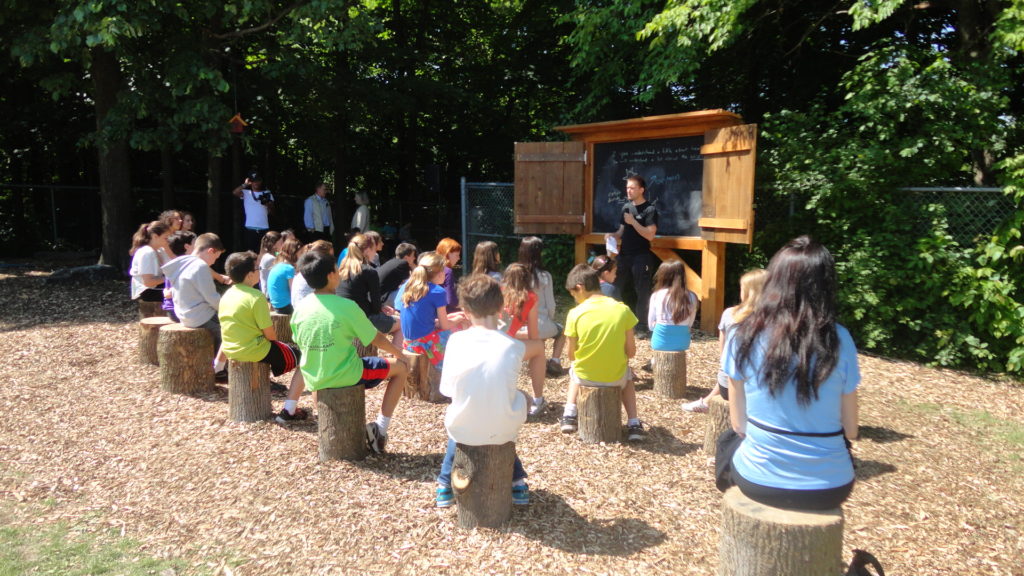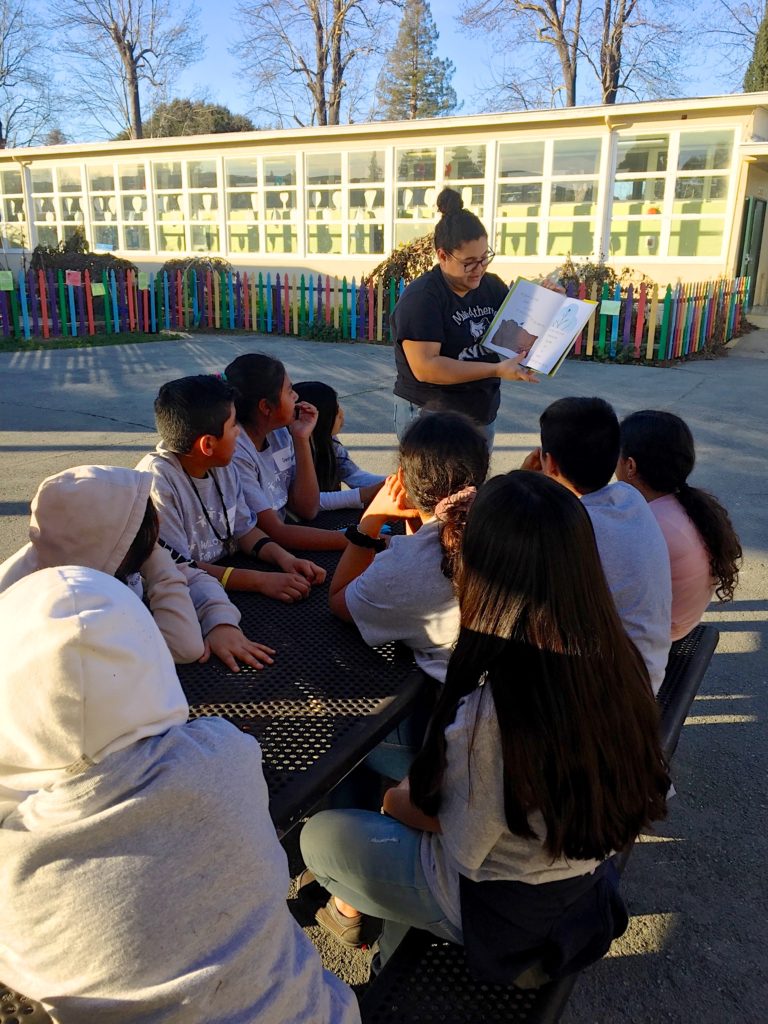- About Us
- Our Work
- Tree Info
- Get Involved
- Blog
- Support Us
By Canopy Team on July 10, 2020

How can students safely return to classrooms this fall? This question is on the mind of school districts and educators across the nation, and the answer is still unclear. Current health regulations limit the number of students allowed in a classroom at one time. However, splitting students up into separate groups could impact education quality, reduce overall education time, and pose significant staffing challenges. Among the solutions being considered, outdoor classrooms have emerged as a promising piece of the puzzle.
Canopy’s Environmental Educator, Vanessa Wyns, is part of a working group with the San Mateo County Office of Education (SMCOE), which is exploring how schools can use outdoor space for socially distanced learning. The group has discussed how educators can rework existing space on campus, and even make use of nearby park spaces. Utilizing outdoor space could help students return to their campuses sooner, which would benefit those who have struggled with distance learning.
Distance learning has proved challenging for some students for a wide variety of reasons. Many families simply don’t have the time to serve as educational support to their students, and distance learning formats are not suited to all learning styles. Other students lack access to key infrastructure, like reliable internet or at-home computers. “Students who have issues with distance learning would benefit from being back at school. We want to help make that possible while still maintaining a safe environment for both students and staff,” Vanessa shared.
Creating outdoor classrooms could have positive impacts even beyond social distancing. “Teaching outdoors, surrounded by trees and changing seasons, deeply connects students to place-based learning in a way that teaching indoors can’t,” says Vanessa. More time outside is also correlated with increased focus and attention, improved relationship skills, and greater engagement with learning.
“Teaching outdoors, surrounded by trees and changing seasons, deeply connects students to place-based learning in a way that teaching indoors can’t.” – Vanessa Wyns
Outdoor classrooms could get students back on their schools campuses, but do not solve the issue of staffing. Social distancing requires smaller class sizes, which requires more teachers. To augment teaching capacity, the SMCOE working group has discussed the possibility of having a rotating schedule of informal educators, such as Vanessa, teaching lessons in outdoor classrooms throughout the week.
It is still unclear whether informal educators will be allowed on school grounds in the fall. However, even if partner educators aren’t permitted on campus in person, Vanessa is hopeful that organizations like Canopy can continue to provide outdoor-friendly curricula that teachers can use to support environmental learning.
 The Future of Schooling?
The Future of Schooling?Given rapidly changing conditions and regulations, it is hard to know for certain what schooling will look like this fall. Ultimately, school districts and teachers want to ensure that students have equal access to learning materials, and that their return to school grounds is safe.
So are outdoor classrooms part of the solution? Green Schoolyards America, a Berkeley-based organization that works closely with SMCOE, certainly thinks so. They have hosted webinars on how to design and create outdoor classrooms that fit all of the guidelines for socially distanced learning. We would love to see such classrooms materialize locally, and will be sure to share as we know more.